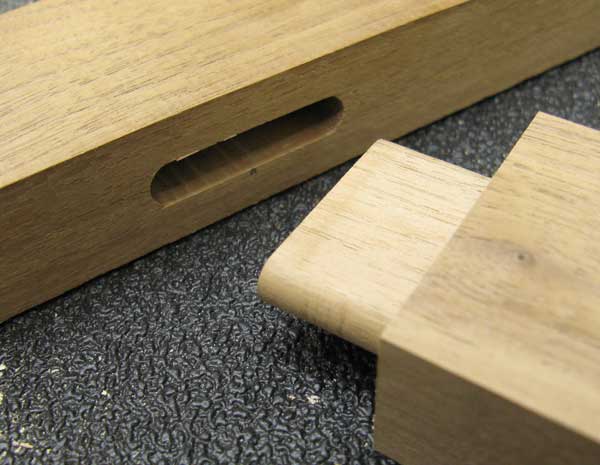
A woodworker glued together, by mistake, a mortise and tenon joint and now wants to get it apart without breaking the wood. Any ideas?
Rob Johnstone: Glue is designed to hold tight and not let go, so this is a serious problem. Depending on the type of glue you used, there are different options. None of them are good. My guess is you used white or yellow woodworking glue or perhaps even epoxy. (If you used hide glue this whole job would be easier, but what are the chances of that?)
All modern glues – or as Michael properly identified them in the last eZine, adhesives – will release at a high enough temperature. Epoxy loosens at about 250 degrees, and yellow and white glue releases at cooler temperatures. Luthiers who are repairing guitars regularly remove an instrument’s neck by pumping steam into the dovetail joint joining the neck to the body of the guitar. They do it regularly, but it is a pain in the…fretboard.
As you may imagine, steam, heat and the force required to pop the joint loose does not leave the pieces of wood looking as they did when the process began. It is also a lot of work. My recommendation is to hang the offending joint on your shop wall as a lesson to be careful in the future, and make up new pieces for your project. And don’t feel too bad, all of us have been exactly where your are right now.
Michael Dresdner: In the guitar industry, we routinely separate necks, assembled either with a mortise and tenon or a sliding compound dovetail, during neck resets. We use a steaming rig – a cappuccino maker or pressure cooker with an automotive fuel line hose clamped to its steam outlet port (a fuel line hose has very high heat resistance and is just the right size). At the far end, we insert a basketball filling needle into the hose and attach it with a hose clamp. Now the steam will issue from the small hole at the end of the needle. Drill a needle sized hole into the glue area of the joint, insert the needle, and turn on the steam. Of course, apron, oven mitts and goggles are in order. The steam will loosen most types of woodworking adhesives (white glue, yellow glue, hide glue) but will not work on polyurethanes or epoxies.
Rick White: One thing that occurs to me is vinegar. Vinegar won’t eat all forms of glue, but it will eat through a lot of them. Try dissolving the glue by injecting the joint with vinegar using a syringe.





